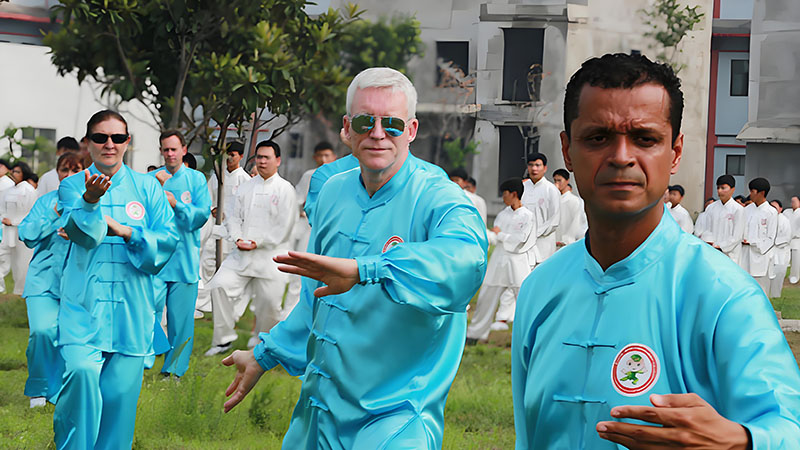
How to learn Tai Chi is a confusing topic for beginners. The following is an introduction to Tai Chi compiled by a descendant of Yang Style Tai Chi, which can be a guide for beginners.
Tradition and Simplification
Many people often feel at a loss when faced with Tai Chi with many schools and complicated routines (the most popular ones now are Chen, Yang, Wu, Sun, Wu, Zhaobao, as well as national competition and simplified routines. Even in traditional routines such as Chen and Yang, there are many branches and schools).
According to the World Health Organization, aerobic fitness exercises should last for more than 30 minutes each time, so whether from the perspective of fitness or as a cultural heritage of boxing, traditional Tai Chi should be the first choice (except for professional competitions).
Suggestion: In order to achieve the real purpose of fitness and health preservation, you should choose to learn and practice traditional Tai Chi.
How to learn the boxing frame well
Tai Chi is one of the unique sports in all sports in the world, and it must be practiced according to its unique rules. I think learning and practicing the boxing frame should go through three stages: first, learn the rules and set the frame. Second, follow the principles and methods to integrate the frame. The third is to return to nature and empty the frame.
Learn the rules and set the frame. Tai Chi is a very strict and standardized boxing style among martial arts schools. Learning and practicing traditional Tai Chi must follow the rules. When beginners start to practice Tai Chi, their body, eyes, steps, hands and direction angles must comply with the requirements of boxing techniques and theories, and they must follow the rules and not be arbitrary.
According to the oral and mental teachings of the master, practice boxing according to the rules and experience with heart. As for the rules of Yang style Tai Chi, for beginners, the first is Yang Gongchengfu’s “Ten Essentials of Tai Chi Boxing”, followed by understanding the 8 methods, 5 steps and 13 postures, and then the Yang family’s “32 Eyes”. As for the specific body, footwork, and hand techniques, as long as you follow a systematically trained Tai Chi teacher to learn, they will patiently and meticulously emphasize the rules of boxing repeatedly during the teaching process.
First, the mind, joints and muscles must be relaxed.
The problem that beginners often have is stiffness, and the result is that they get more and more tired the more they fight. Not only can they not achieve the purpose of fitness training, but they are also easy to hurt themselves. Therefore, learning the boxing form is also the initial process of getting rid of stiffness and seeking relaxation and softness.
Second, sink the shoulders and drop the elbows, relax the waist and open the hips.
A common problem that often occurs when you first practice the boxing form is shrugging your shoulders and turning your elbows, which will naturally make your body tight. Therefore, you must constantly reflect during the boxing process and check whether your shoulders and elbows are relaxed and sinking. Loosening the waist and hips is one of the most difficult and fundamental cores in Tai Chi. The waist and hips are the masters of the body. Only when the waist and hips are loose can the whole body be relaxed and soft.
Third, natural gear spacing.
This is the unique feature of Yang style Tai Chi. Whether it is a bow step, a horizontal step, a step forward or a step backward, the two feet are required to have a horizontal distance of about the same width as the shoulders. In this way, you can straighten your shoulders and cross your legs, and be upright and relaxed.
Fourth, the direction must be correct.
Tai Chi has the so-called four directions and four corners. When stepping up and stepping back during the boxing form, the toes must step in the right direction. In addition, it is important to note that the chest line must also be in the same direction as the toes (except for some movements that are two-way force chest lines in both directions). Because only when the chest line and the toes are in the same direction can you seize the opportunity and move forward and backward freely.
Fifth , to distinguish between the real and the fake
Yang Gong Chengfu said: “The two legs should be distinguished between the real and the fake, and the rise and fall are like a cat walking. If the weight is transferred to the left, the left is real and the right foot is fake; if it is transferred to the right, the right is real and the left foot is fake.” Therefore, beginners must distinguish between the real and the fake, and use single weight instead of double weight.
